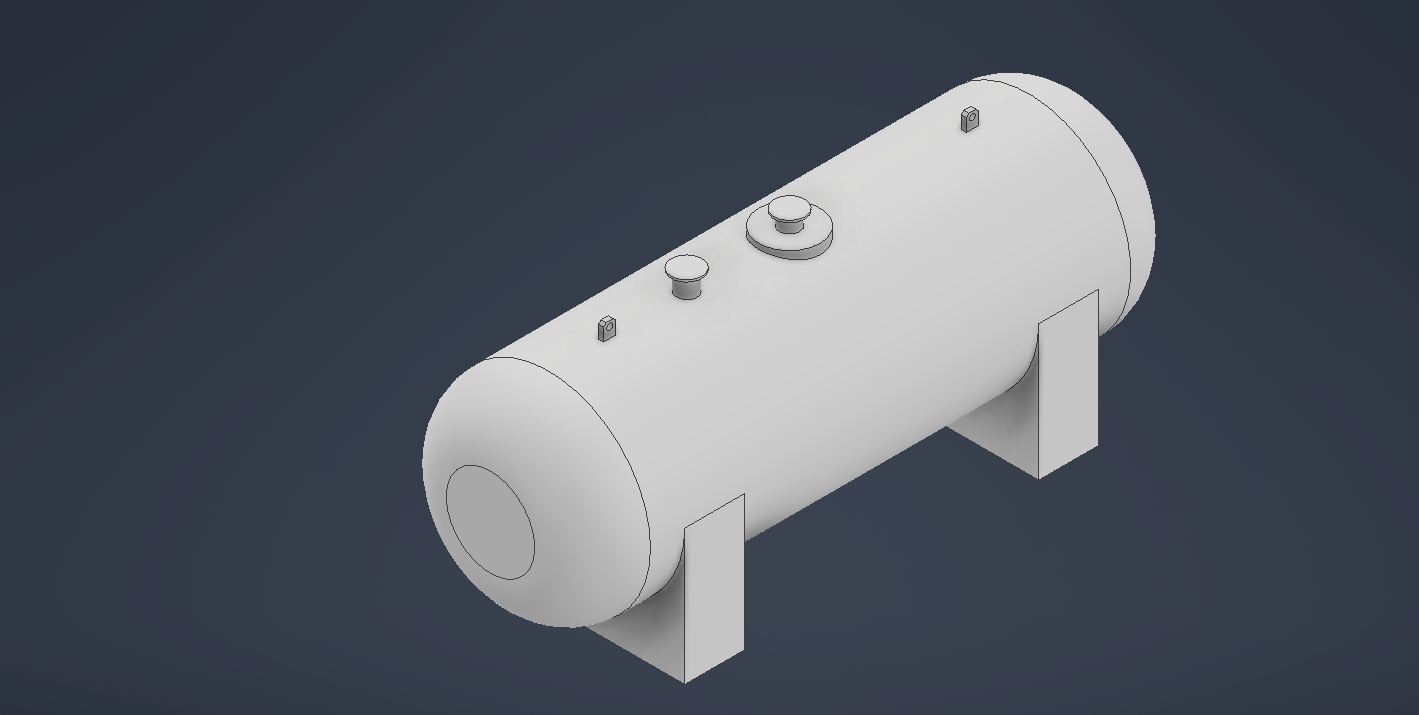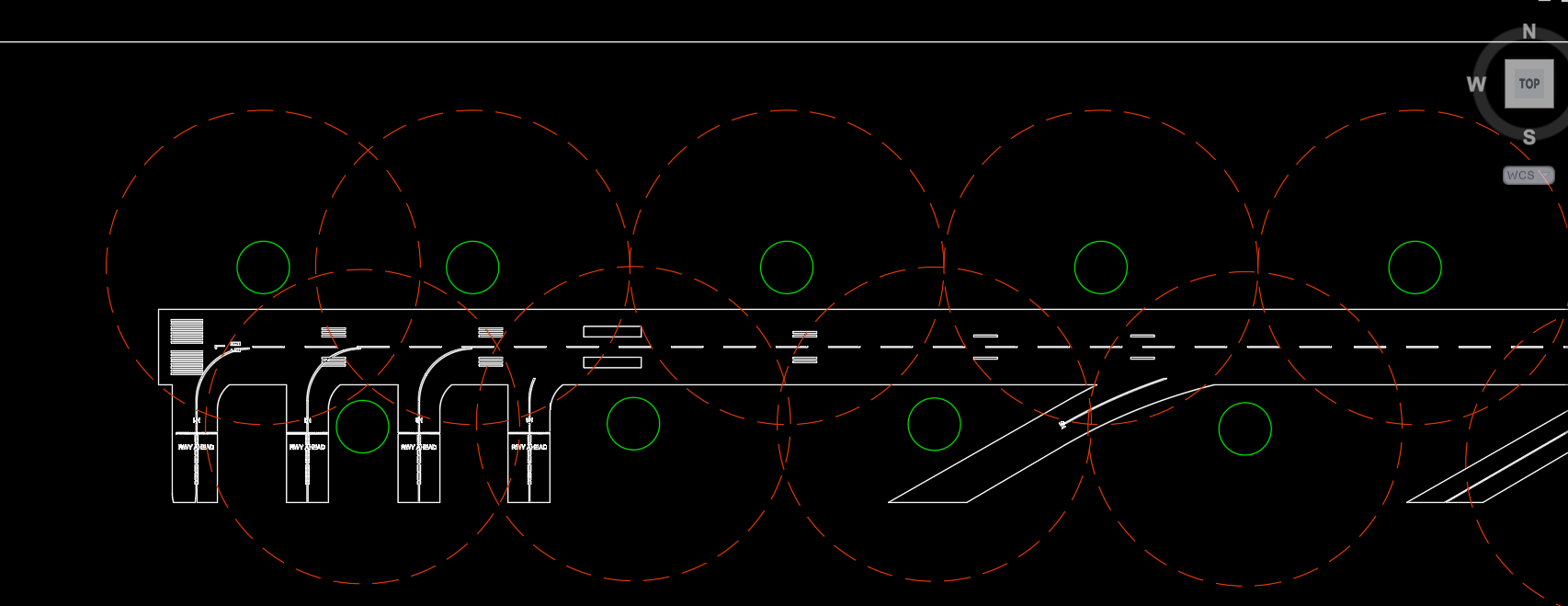A rapid fire detection and suppression system for airports
The Emergency Guard System (EGS) project is the creation of the Student Research Group of Air Transport from the Faculty of Transport at the Warsaw University of Technology. Thanks to this idea, our team took second place in the AviaTech Challenge 2024 Aviation Hackathon.
The Podkarpackie Aviation Hackathon AviaTech Challenge is the largest aviation marathon for programmers and designers in the country. Participants of the 2024 event met in Mielec on May 18-19. They were tasked with creating a project related to air transport. There were five categories to choose from: unmanned aerial vehicles, ecology of air transport, dual-use defense, air transport safety, and an open category. Awards were given in each category, and in the final, the three best projects of the entire hackathon were honored. The second place was awarded to the idea from the Student Research Group of Air Transport, prepared in the air transport safety category – the Emergency Guard System (EGS). Our students also received a commendation in the most inventive photo contest.
The success is thanks to the team consisting of Jakub Kowalski, Daniel Czagan, Justyn Górski, Olga Karaś, Stanisław Sarnowski, and MSc. Eng. Andrzej Skoczylas.
Time is of the essence
The awarded EGS (Emergency Guard System) project aims to enhance airport safety by quickly detecting and extinguishing fires using modern fire cannon technology. EGS allows for rapid and effective fire suppression even during the approach of emergency services, which is crucial for minimizing risk and ensuring maximum safety for all airport users. Additionally, the system’s efficiency surpasses that of traditional fire brigades by utilizing thermal cameras and immediate response, enabling faster and more effective action in case of a fire or other hazards resulting from mechanical failures.
– Airport fire brigades have a limited time to reach a burning aircraft – a maximum of 180 seconds for Category 9 airports – explains Jakub Kowalski, one of the creators of the idea. – In this short period, much can happen, so it is crucial to be able to take firefighting actions directly at the source of the fire within this time, minimizing losses and the risk of the fire spreading. Additionally, the EGS is intended to act preventively to avoid damage during an emergency landing of an aircraft without extended landing gear by covering the runway surface with a fire-extinguishing agent.
System operation includes four elements. The first is the rapid detection of a fire on the runway using thermal cameras. The second is semi-automatic targeting of fire cannons – upon detecting a fire, the system uses artificial intelligence and triangulation between multiple cameras to optimally direct the water stream to the fire source, minimizing reaction time and effectively extinguishing the fire. It also has manual control capability in adverse conditions. The third point is the coordination of actions between fire cannons and other rescue units, such as the airport fire brigade. The goal here is to optimize the firefighting process and minimize risk to people and property. Finally, element number four is monitoring and reporting. The system continuously monitors the fire situation and other temperature anomalies on and near the runway. It provides real-time information about changes, enabling quick response and appropriate action.
System construction
The fire safety and protection system includes cannons, a supply tank, and an attached infrared camera.
– The cannons are mounted on a mechanical gear system that allows a full 360-degree rotation – explains Jakub Kowalski. – They are embedded in the ground to avoid disrupting ground operations and comply with the norms and recommendations of Annex 14 to the Convention on International Civil Aviation – "Aerodrome Design and Operation". When the system is not in use, it is covered with a protective element that shields it from adverse external factors such as weather conditions.
The cannon itself is powered by a tank located in a container that contains fire-extinguishing agents delivered through pipes. Pressure is a key element in the system, ensuring proper device operation.
– The cannon is also connected to an infrared camera that detects heat sources – continues Jakub Kowalski. – Upon fire detection, the system's artificial intelligence automatically activates the fire cannons, directing the fire-extinguishing agent stream towards the fire. It also assists in targeting to ensure the cannon's operation is as effective as possible, minimizing losses and ensuring quick fire suppression. Assuming the cannon operates at full pressure, it can discharge fire-extinguishing foam up to 150 meters for 30 to 40 seconds, ensuring safety not only on the runway but also around it.
In the EGS, the thermal camera plays a crucial role in the rapid detection of fires on the runway.
Information gathered by the thermal camera is transmitted to a computer where data processing occurs. In a specially prepared program, the camera analyzes the temperature of the examined areas, detecting a fire by identifying temperatures above a set norm. When such a temperature is detected, the program immediately sends information to the fire cannon, which is targeted at the highest temperature point. The artificial intelligence used in the system allows for ignoring engine temperatures, which can generate high temperatures due to their nature.
Additionally, advanced AI algorithms help target the cannon considering various factors, allowing effective fire suppression on the runway. Moreover, after the complete stop of the aircraft, the foam stream is directed to avoid evacuation routes, such as filled slides. Thus, the thermal camera is an indispensable tool for quick fire hazard response and minimizing risk to all airport users.
– In the EGS installation design, we used FFFP foams – film-forming fluoroprotein foams consisting of protein and fluorinated surfactants – explains Jakub Kowalski. – They form thin water films on the surface of flammable liquids, increasing the foam's oleophobic (oil-repellent) properties. FFFP foams are effective in firefighting operations conducted at airports because foam contaminated with fuel does not reduce effectiveness. They effectively suppress flammable vapors because they quickly spread and act as a surface barrier preventing air access and evaporation. The film coating that forms spreads over the fuel surface and has self-sealing properties. The foam generation method is based on the Venturi effect – using a constriction with a significantly smaller cross-section than the main channel, increasing flow speed and reducing pressure. In the EGS, the vacuum draws air into the solution passing through the constriction.
What about implementation?
– The EGS is a good solution for airports with high throughput and traffic intensity, where the probability of an emergency situation is higher – emphasizes Jakub Kowalski. – Therefore, it is worth implementing the system on one (and due to costs and demand – the only) runway prepared to receive an aircraft in an emergency.
According to the creators, implementation costs vary significantly due to the diversity and uniqueness of airports. The project includes a scheme of fixed costs unaffected by airport infrastructure conditions – PLN 4,374,000 (cannon PLN 60,000 each, tank PLN 60,000 each, container PLN 7,000 each, thermal camera PLN 35,000 each – all multiplied by 27).











